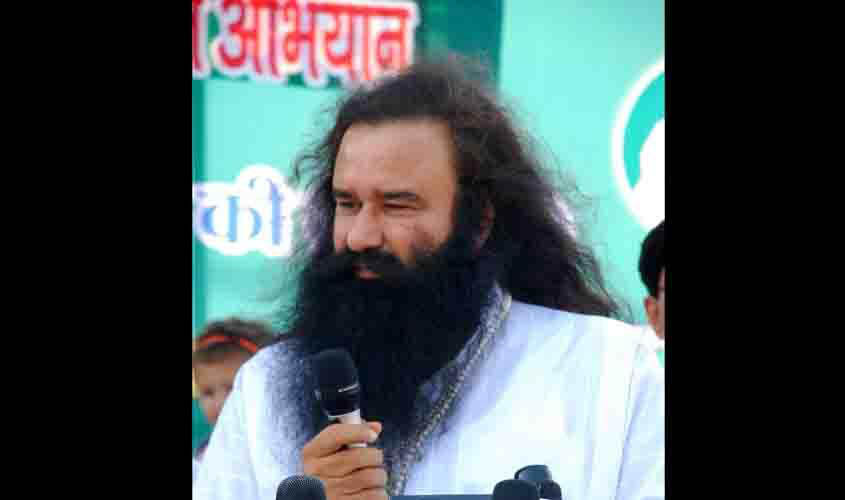 Amidst all the accounts of sleazy scandals of the misnomer of a guru, it was a bit odd to think about widespread forms of religiosity around the teachings of popular mystical figures. What constitutes as important characteristics of an acceptable spiritual guru, a holy-man, and what makes them impostors? The saintly exemplars are supposed to bear a good moral character, as often emphasised in official testimonials in Indian English. They can have an enormous presence and play important spiritual and social roles. In aggressive communal situations, they are also invoked to support voices of sanity—for instance, when trying to illustrate how leading medieval Sufi and Bhakti saints preached in the language of love and tolerance. As extraordinary figures with access to the mysteries of the divine, they are also supposed to have paranormal powers to perform miraculous feats to create spectacle and generate awe.
Amidst all the accounts of sleazy scandals of the misnomer of a guru, it was a bit odd to think about widespread forms of religiosity around the teachings of popular mystical figures. What constitutes as important characteristics of an acceptable spiritual guru, a holy-man, and what makes them impostors? The saintly exemplars are supposed to bear a good moral character, as often emphasised in official testimonials in Indian English. They can have an enormous presence and play important spiritual and social roles. In aggressive communal situations, they are also invoked to support voices of sanity—for instance, when trying to illustrate how leading medieval Sufi and Bhakti saints preached in the language of love and tolerance. As extraordinary figures with access to the mysteries of the divine, they are also supposed to have paranormal powers to perform miraculous feats to create spectacle and generate awe.
The careers of Sufis this writer has studied, followed a cardinal principle of controlling the self—especially controlling and cleansing the lower-self and strong determination such as their claim that they are wedded to God and God alone: “I have tied the knots of my pyjama so strongly that it cannot be loosened even for the lovely virgins of paradise.” The mystics’ lives revolved around vigils, prayers and meditation at night to express their love for God; the day was spent in service to humanity, or creations of God as an extension of devotion to Him.
In doing all this, Sufis wanted to keep clear of materialistic temptations of the world and not get carried away by their wide popularity or seek admiration in the first place; stay in the world, yet away from it, a position identified as renunciation, which did not imply leaving the world to live in a jungle, but to protect oneself from greed and varied attractions of the world. They suffered from the natural contradictory pulls of love for God and desire for love, but mostly handled the matter with grace.
Those who sought to advertise their spiritual powers to gain resources and followers were feared getting involved in scandals and even if they were clever enough to avoid any controversy their name and fame would end with them—leaving nothing in legacy or for those affected only terrible memories of their offence. By contrast, those who did not seek publicity, maintained distance from the ugliness of the politics of the time and when they intervened in politics, did so in a judicious manner—neither to bow down before the autocrat nor allow the latter to lay prostrate before him. They devoted themselves to the love of God and selfless service to humanity, leaving a lasting legacy even in those areas where the initial contact might not have been peaceful. In some cases, tuhmat or false charges of sexual or social misdemeanour could have been levelled by antagonists, the resolution of which involved silently migrating to a place where there was anonymity, or undergoing judicial inquest, or leaving the matter for God to resolve.
All the above were as regards to the much respected Sufi masters, with strong credentials as extraordinary charismatic figures, in their times and for centuries to come. They protected themselves from any malamat or accusations of deviating from religious or social norms within Islam; thus, they were conformists working from within the framework of broader and inclusive Islamic notions of ahl-i sunnat wal jama’at, or community of followers of the Prophet; crudely identified as Sunnis, though often locked in struggles with Sunnite theologians.
The people involved in the current scandals represent syncretic sects and communities. Historically, socially-marginal communities have resisted and negotiated with often violent and dominant religions.
They are examples of often talked-about religious and cultural diversity, borrowings, appropriations and coexistence in a tolerant and plural society. Some of these groups also resort to practices condemned in mainstream religious worldview, as in cases of deviant mystic cults resorting to intoxicants for artificial ecstasy. One medieval group, which particularly draws attention in the present environment fraught with tension, is a sect inserting iron-rods through their private parts to control uncontrollable desires. The modern-day lust-charged babas will do well to learn from their own broader tradition so that the bazaar of spirituality can run its business with some dignity.
Compulsions of vote-bank politics sometimes force political parties to make compromises, but, mercifully, law is catching up with all kinds of fake babas, bhakts, yogis, mullahs and other impostors. The judiciary is the last hope in the country, and happily it is working. These are moments which also call for modern and progressive laws, which must prevail over all other considerations—grand or petty. The nexus of politics, religion, obscurantism and crime can only be detrimental for any civilised country.

